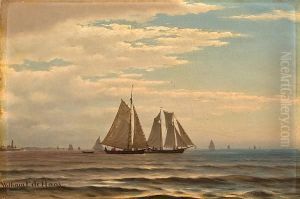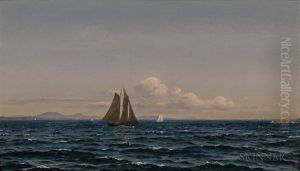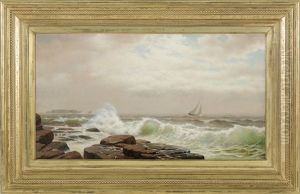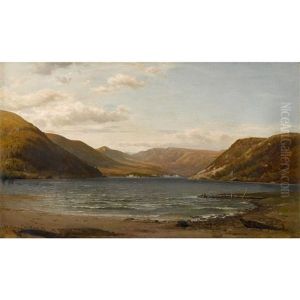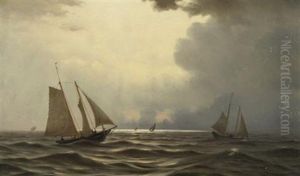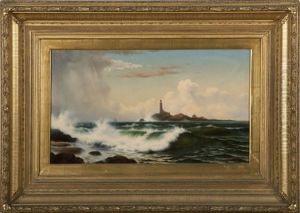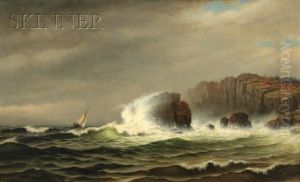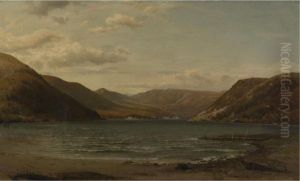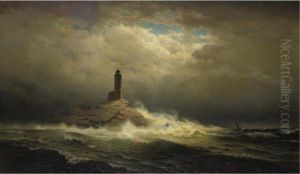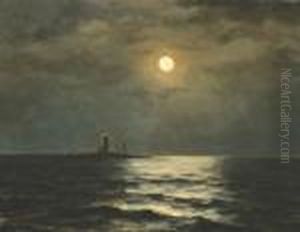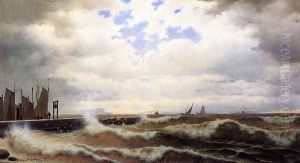William Frederick de Haas Paintings
William Frederick de Haas was a 19th-century American marine painter born in Rotterdam, Netherlands, on February 27, 1830. His full name is sometimes given as William Frederik de Haas, reflecting the Dutch spelling of his name. De Haas studied at the Academy of Fine Arts in Rotterdam and continued his education in the arts at the Hague and in Munich.
After settling in the United States in 1859, de Haas became known for his coastal and marine landscapes, particularly his depictions of the New England seashore. His work is characterized by its meticulous detail and realistic portrayal of the sea and its ships. De Haas exhibited a deep understanding of maritime subjects, which was reflected in the accuracy of his ship portrayals and the lively yet harmonious atmosphere he depicted in his seascape paintings.
De Haas became a member of the National Academy of Design in New York City in 1863 and his work was frequently exhibited there. He was also an active member of the art community, contributing to the growth of American marine painting during the latter half of the 19th century. His works were celebrated for their technical skill and for their beautiful rendering of light and atmosphere.
William Frederick de Haas was married to fellow artist Maurine T. de Haas, who was also a painter, specializing in marine subjects. Together, they had a significant influence on the American art scene during their time. De Haas' legacy lives on through his paintings, which continue to be appreciated by art enthusiasts and collectors for their beauty and historical value.
Tragically, de Haas died at the relatively young age of 50, on November 23, 1880, in New York City. Despite his early death, he left behind a rich body of work that contributes to the historical record of American maritime life and landscape of the 19th century. His paintings are held in high regard and can be found in various museums and private collections throughout the United States.

